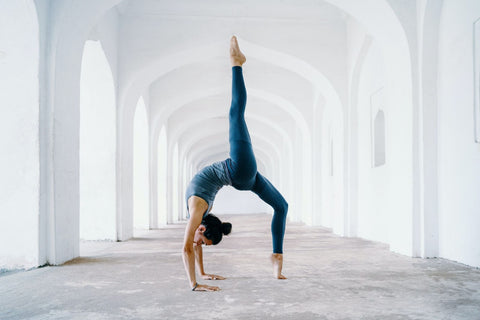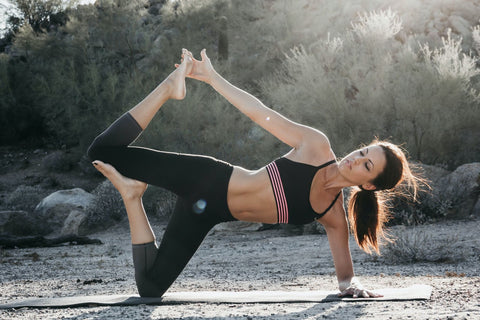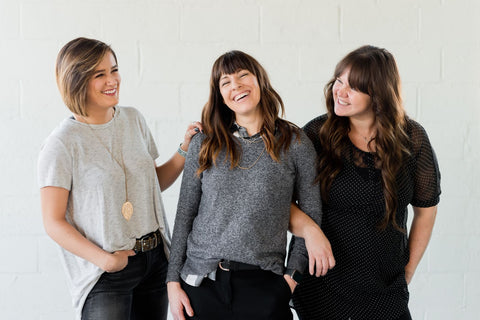Incorporating yoga inversions into your at home yoga routine can beautifully transform your everyday practice. They’re not only super fun, but also provide amazing benefits, like flipping your perspective, draining the lymphatic system, cultivating focus, checking the ego, and strengthening your core, arms, shoulders, back, and other stabilizing muscles throughout your body.
Before throwing yourself into a handstand or a tricky forearm balance, it’s worth noting—like most things in life—there are risks of yoga inversions. To get the most out of your inversion yoga practice and to perform the poses safely, take a look at these tips.

Break it down to build it up
Breaking down yoga inversions into their simpler forms can help prepare your body to make the same shapes upside down. For example, if your goal is to do forearm or elbow stands, like pincha mayurasana, then practice dolphin pose, which is basically downward dog on elbows. It mimics the upper body’s position and helps build the muscles necessary to safely move onto more difficult forearm yoga positions.
If you’re constantly wondering how to get better at yoga poses, then breaking down each variation into more manageable parts and incorporating strength into your regular practice are key. Try incorporating ashtanga yoga poses in your daily yoga practice to build up your body’s overall strength and endurance. Remember to always start simple and stretch the areas of your body that you strengthen.
Light as a feather = stiff as a board
Once your body is in the basic shape of the inversion, focus on activating your muscles. When you focus on making everything tight, your body will seem lighter which will make getting into those tricky poses easier.
The rule of three
The yoga sutras tell us that steady and consistent effort, along with non-attachment to the outcome, will bring the most benefits to our practice. If you’re working through a pose, try it a maximum of three times per practice. This will help build strength and muscle memory, while preventing the frustration that comes with trying a pose multiple times and not “sticking” it.

Breathe
The breath is an incredible tool that can be used to calm the nervous system. Approaching yoga inversions from a place of calm strengthens your body and mind connection, making it easier to cultivate muscle memory. Try inhaling as you float up and imagine your breath carrying you effortlessly upside down.
Ego
Be mindful of the ego. The ego is the trickiest part of inversions to master because it can overtake our minds and our practice—if we allow it. Never forget that your worth is not contingent on your ability to balance upside down. Avoid comparing your practice to others and, instead of getting frustrated at the journey, learn to enjoy it. If you’re mindful of the ego, you’ll learn so much about your mental habits. Can you use your inversion practice to break through limiting beliefs?
Be safe
Maintaining a safe practice is all about knowing your body and its limits. Before diving into the most difficult yoga poses, you must be comfortable with the foundational yoga poses and work on building stabilizing muscles. Start with the basics by building the necessary core, shoulder and arm strength that will eventually take you upside down. If you have any injuries, be sure to consult with your doctor first before trying any risky yoga inversions. And, when in doubt, ask a yoga instructor at your local studio for some tips!
The best way to approach inversion yoga is from a place of deep connection to your body. Take it easy, be kind to yourself, respect to your practice and, above all, enjoy the journey!
About the Author:
Lindsey Hammond is a recovering perfectionist, educator, and world traveler who believes wholeheartedly in the power of yoga to create kindness and peace. No matter where in the world she is, she connects deeply and authentically with her students to help them find both inner and outer strength.







